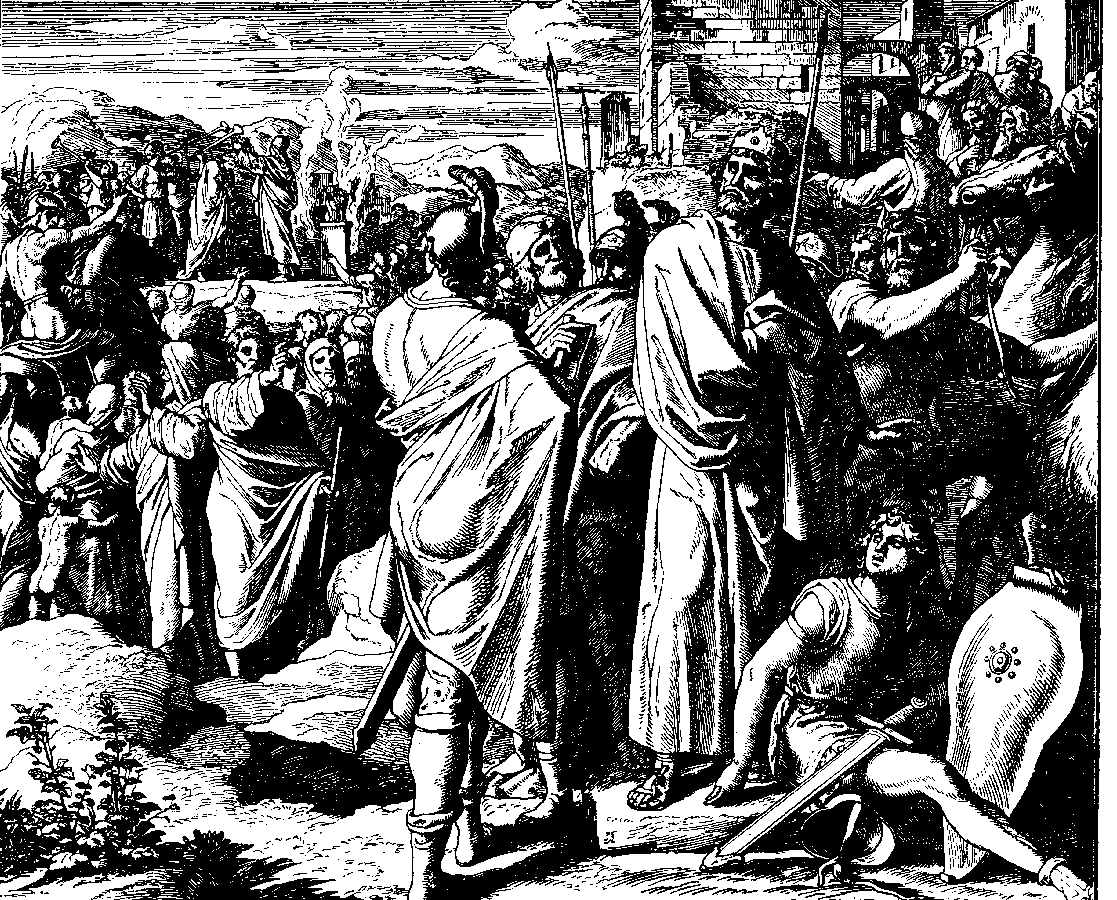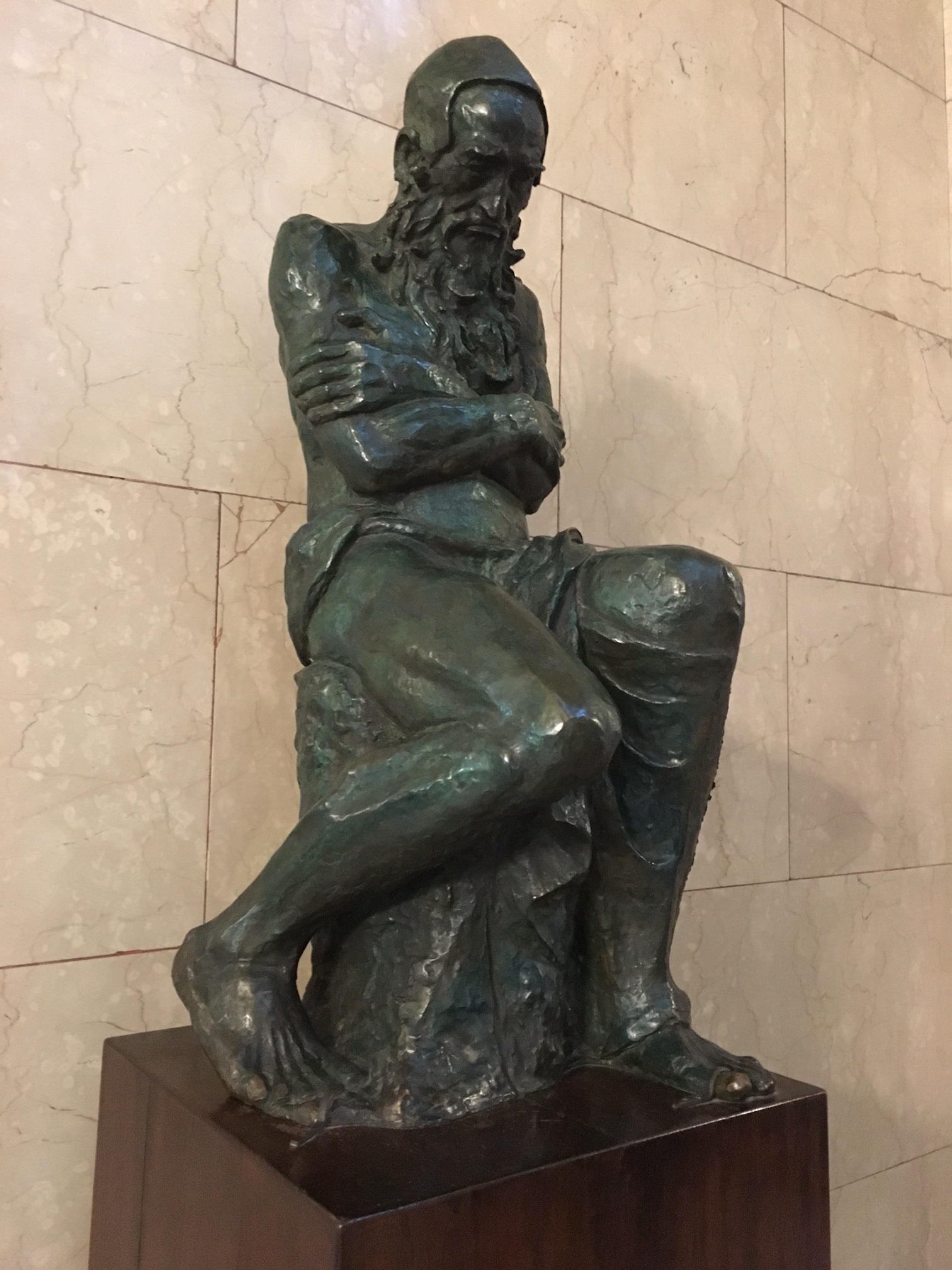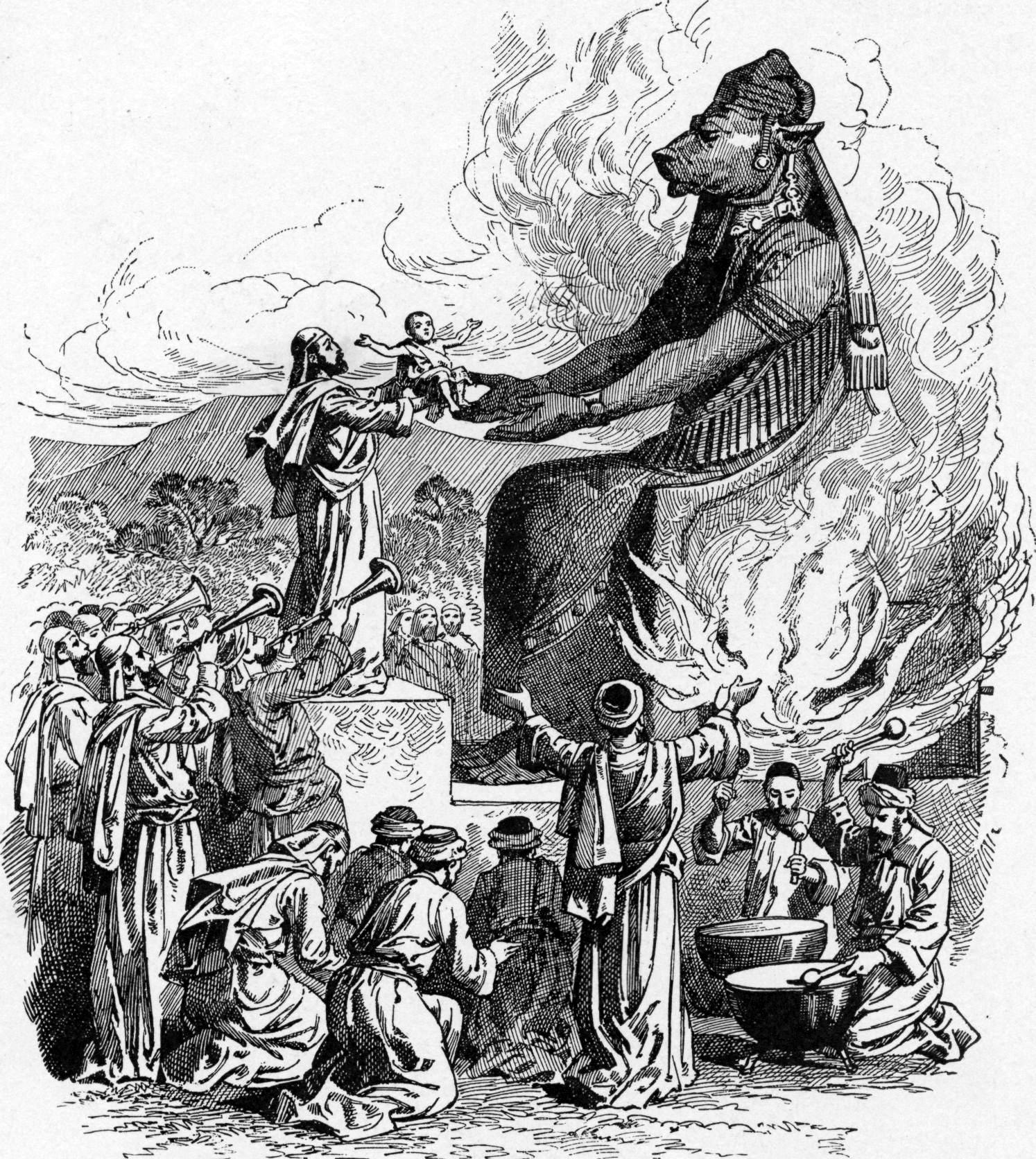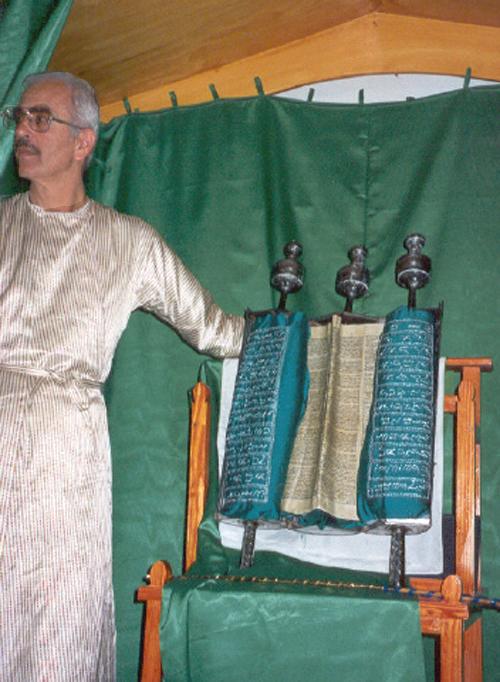|
Binding Of Isaac
The Binding of Isaac (), or simply "The Binding" (), is a story from Book of Genesis#Patriarchal age (chapters 12–50), chapter 22 of the Book of Genesis in the Hebrew Bible. In the biblical narrative, God in Abrahamic religions, God orders Abraham to sacrifice his son Isaac on the mountain called Jehovah-jireh in the region of Moriah. As Abraham begins to comply, having bound Isaac to an altar, he is stopped by the Angel of the Lord; a ram appears and is slaughtered in Isaac's stead, as God commends Abraham's pious obedience to offer his son as a human sacrifice. Especially in art, the episode is often called the Sacrifice of Isaac, although in the end Isaac was not sacrificed. Various scholars suggest that the original story of Abraham and Isaac may have been of a completed human sacrifice, later altered by redactors to substitute a ram for Isaac, while some traditions, including certain Jewish and Christian interpretations, maintain that Isaac actually was sacrificed. In ad ... [...More Info...] [...Related Items...] OR: [Wikipedia] [Google] [Baidu] |
Sacrifice Of Isaac-Caravaggio (Uffizi)
Sacrifice is an act or offering made to a deity. A sacrifice can serve as propitiation, or a sacrifice can be an Offering (Christianity), offering of praise and thanksgiving. Evidence of ritual animal sacrifice has been seen at least since ancient Hebrews and Greeks, and possibly existed before that. Evidence of ritual human sacrifice can also be found back to at least pre-Columbian civilizations of Mesoamerica as well as in European civilizations. Varieties of ritual non-human sacrifices are practiced by numerous religions today. Terminology The Latin language, Latin term ''sacrificium'' (a sacrifice) derived from Latin ''sacrificus'' (performing priestly functions or sacrifices), which combined the concepts ''sacra'' (sacred things) and ''facere'' (to make, to do). The Latin word ''sacrificium'' came to apply to the Christian eucharist in particular, sometimes named a "bloodless sacrifice" to distinguish it from blood sacrifices. In individual non-Christian ethnic religio ... [...More Info...] [...Related Items...] OR: [Wikipedia] [Google] [Baidu] |
Books Of Chronicles
The Book of Chronicles ( , "words of the days") is a book in the Hebrew Bible, found as two books (1–2 Chronicles) in the Christian Old Testament. Chronicles is the final book of the Hebrew Bible, concluding the third section of the Jewish Tanakh, the Ketuvim ("Writings"). It contains a genealogy starting with Adam and a history of ancient Judah and Israel up to the Edict of Cyrus in 539 BC. The book was translated into Greek and divided into two books in the Septuagint in the mid-3rd century BC. In Christian contexts Chronicles is referred to in the plural as the Books of Chronicles, after the Latin name given to the text by Jerome, but is also referred to by its Greek name as the Books of Paralipomenon. In Christian Bibles, they usually follow the two Books of Kings and precede Ezra–Nehemiah, the last history-oriented book of the Protestant Old Testament. Summary The Chronicles narrative begins with Adam, Seth and Enosh, and the story is then carried forward, almos ... [...More Info...] [...Related Items...] OR: [Wikipedia] [Google] [Baidu] |
Jeremiah
Jeremiah ( – ), also called Jeremias, was one of the major prophets of the Hebrew Bible. According to Jewish tradition, Jeremiah authored the Book of Jeremiah, book that bears his name, the Books of Kings, and the Book of Lamentations, with the assistance and under the editorship of Baruch ben Neriah, his scribe and disciple. According to the narrative of the Book of Jeremiah, the prophet emerged as a significant figure in the Kingdom of Judah in the late 7th and early 6th centuries BC. Born into a Kohen, priestly lineage, Jeremiah reluctantly accepted his religious calling, call to prophethood, embarking on a tumultuous ministry more than five decades long. His life was marked by opposition, imprisonment, and personal struggles, according to Jeremiah 32 and Jeremiah 37, 37. Central to Jeremiah's message were Bible prophecy, prophecies of impending divine judgment, forewarning of the nation's idolatry, social injustices, and moral decay. According to the Bible, he prophesied t ... [...More Info...] [...Related Items...] OR: [Wikipedia] [Google] [Baidu] |
Ta'anit (Talmud)
''Ta'anit'' or ''Taynis'' () is a volume (or "tractate") of the Mishnah, Tosefta, and both Talmuds. In Judaism these are the basic works of rabbinic literature. The tractate of Ta'anit is devoted chiefly to the fast-days, their practices and prayers. In most editions of the Talmud this treatise is the ninth in the mishnaic order of Seder Mo'ed, and is divided into four chapters containing thirty-four folio in all. Summary The main contents of the Ta'anit are as follows: * Chapter 1: Concerning the date on which one begin to mention rain in the second blessing of the Amidah and to pray for rain in the eighth blessing (1:1-3); the time during which one fasts on account of scarcity of rain—two successive periods of three days each, and a final one of seven days—and the distinctions between these various days concerning strictness in fasting (1:4-6); nature of the national mourning in case no rain falls despite many fast-days (1:7). * Chapter 2: The ceremonies which must b ... [...More Info...] [...Related Items...] OR: [Wikipedia] [Google] [Baidu] |
Talmud
The Talmud (; ) is the central text of Rabbinic Judaism and the primary source of Jewish religious law (''halakha'') and Jewish theology. Until the advent of Haskalah#Effects, modernity, in nearly all Jewish communities, the Talmud was the centerpiece of Jewish culture, Jewish cultural life and was foundational to "all Jewish thought and aspirations", serving also as "the guide for the daily life" of Jews. The Talmud includes the teachings and opinions of thousands of rabbis on a variety of subjects, including halakha, Jewish ethics, Jewish philosophy, philosophy, Jewish customs, customs, Jewish history, history, and Jewish folklore, folklore, and many other topics. The Talmud is a commentary on the Mishnah. This text is made up of 63 Masekhet, tractates, each covering one subject area. The language of the Talmud is Jewish Babylonian Aramaic. Talmudic tradition emerged and was compiled between the destruction of the Second Temple in 70 CE and the Arab conquest in the early seve ... [...More Info...] [...Related Items...] OR: [Wikipedia] [Google] [Baidu] |
Child Sacrifice
Child sacrifice is the ritualistic killing of children in order to please or appease a deity, supernatural beings, or sacred social order, tribal, group or national loyalties in order to achieve a desired result. As such, it is a form of human sacrifice. Child sacrifice is thought to be an extreme extension of the idea that the more important the object of sacrifice, the more devout the person rendering it. The practice of child sacrifice in Europe and the Near East appears to have ended as a part of the religious transformations of late antiquity. Pre-Columbian cultures Archaeologists have found the remains of more than 140 children who were sacrificed in Peru's northern coastal region. Aztec culture The Aztecs are well known for their ritualistic human sacrifice as offerings to gods with the goal of restoring cosmological balance. While the demographic of people chosen to sacrifice remains unclear, there is evidence that victims were mostly warriors captured in battle ... [...More Info...] [...Related Items...] OR: [Wikipedia] [Google] [Baidu] |
Rembrandt - Sacrifice Of Isaac - WGA19096
Rembrandt Harmenszoon van Rijn (; ; 15 July 1606 – 4 October 1669), mononymously known as Rembrandt was a Dutch Golden Age painter, printmaker, and draughtsman. He is generally considered one of the greatest visual artists in the history of Western art.Gombrich, p. 420. It is estimated that Rembrandt's surviving works amount to about three hundred paintings, three hundred etchings and several hundred drawings. Unlike most Dutch painters of the 17th century, Rembrandt's works depict a wide range of styles and subject matter, from portraits and self-portraits to landscapes, genre scenes, allegorical and historical scenes, biblical and mythological subjects and animal studies. His contributions to art came in a period that historians call the Dutch Golden Age. Rembrandt never went abroad but was considerably influenced by the work of the Italian Old Masters and Dutch and Flemish artists who had studied in Italy. After he achieved youthful success as a portrait painter ... [...More Info...] [...Related Items...] OR: [Wikipedia] [Google] [Baidu] |
Mount Gerizim
Mount Gerizim ( ; ; ; , or ) is one of two mountains in the immediate vicinity of the State of Palestine, Palestinian city of Nablus and the biblical city of Shechem. It forms the southern side of the valley in which Nablus is situated, the northern side being formed by Mount Ebal. The mountain is one of the highest peaks in the West Bank and rises to above sea level, lower than Mount Ebal. The mountain is particularly steep on the northern side, is sparsely covered at the top with shrubbery, and lower down there is a spring (hydrology), spring with a high yield of fresh water.''Jewish Encyclopedia'' For the Samaritans, Samaritan people, most of whom live around it, Mount Gerizim is considered the holiest place on Earth. The mountain is mentioned in the Bible as the place where, upon first entering the Promised Land after the Exodus, the Israelites performed ceremonies of blessings, as they had been instructed by Moses. Mount Gerizim is sacred to the Samaritans, who regard it ... [...More Info...] [...Related Items...] OR: [Wikipedia] [Google] [Baidu] |
Samaritan Pentateuch
The Samaritan Pentateuch, also called the Samaritan Torah (Samaritan Hebrew: , ), is the Religious text, sacred scripture of the Samaritans. Written in the Samaritan script, it dates back to one of the ancient versions of the Torah that existed during the Second Temple period. It constitutes the entire biblical canon in Samaritanism. Some 6,000 differences exist between the Samaritan and the Jewish Masoretic Text. Most are minor variations in the spelling of words or Grammatical construction, grammatical constructions, but others involve significant semantic changes, such as the uniquely Samaritan commandment to construct an altar on Mount Gerizim. Nearly 2,000 of these textual variations agree with the Koine Greek Septuagint, and some are shared with the Vulgate, Latin Vulgate. Throughout their history, Samaritans have used translations of the Samaritan Pentateuch into Aramaic language, Aramaic, Greek, and Arabic, as well as Liturgy, liturgical and Exegesis, exegetical works b ... [...More Info...] [...Related Items...] OR: [Wikipedia] [Google] [Baidu] |
Temple Mount
The Temple Mount (), also known as the Noble Sanctuary (Arabic: الحرم الشريف, 'Haram al-Sharif'), and sometimes as Jerusalem's holy esplanade, is a hill in the Old City of Jerusalem, Old City of Jerusalem that has been venerated as a Sacred space, holy site for thousands of years, including in Judaism, Christianity and Islam. The present site is a flat plaza surrounded by retaining walls (including the Western Wall), which were originally built by Herod the Great, King Herod in the first century BCE for an expansion of the Second Temple, Second Jewish Temple. The plaza is dominated by two monumental structures originally built during the Rashidun and early Umayyad Caliphate, Umayyad caliphates after Siege of Jerusalem (636–637), the city's capture in 637 CE:Nicolle, David (1994). ''Yarmuk AD 636: The Muslim Conquest of Syria''. Osprey Publishing. the main Qibli Mosque, praying hall of al-Aqsa Mosque and the Dome of the Rock, near the center of the hill, which was com ... [...More Info...] [...Related Items...] OR: [Wikipedia] [Google] [Baidu] |
Jerusalem
Jerusalem is a city in the Southern Levant, on a plateau in the Judaean Mountains between the Mediterranean Sea, Mediterranean and the Dead Sea. It is one of the List of oldest continuously inhabited cities, oldest cities in the world, and is considered Holy city, holy to the three major Abrahamic religions—Judaism, Christianity, and Islam. Both Israel and Palestine claim Jerusalem as their capital city; Israel maintains its primary governmental institutions there, while Palestine ultimately foresees it as its seat of power. Neither claim is widely Status of Jerusalem, recognized internationally. Throughout History of Jerusalem, its long history, Jerusalem has been destroyed at least twice, Siege of Jerusalem (other), besieged 23 times, captured and recaptured 44 times, and attacked 52 times. According to Eric H. Cline's tally in Jerusalem Besieged. The part of Jerusalem called the City of David (historic), City of David shows first signs of settlement in the 4th ... [...More Info...] [...Related Items...] OR: [Wikipedia] [Google] [Baidu] |
Book Of Zechariah
The Book of Zechariah is a Jewish text attributed to Zechariah, a Hebrew prophet of the late 6th century BC. In the Hebrew Bible, the text is included as part of the Twelve Minor Prophets, itself a part of the second division of that work. In the Christian Old Testament, the Book of Zechariah is considered to be a separate book and consists of fourteen chapters. Historical context One of the three prophets from the post- exilic period, Zechariah's prophecies took place during the reign of Darius the Great. Chapters 1–8 of the book are contemporary with the prophecies of Haggai, while chapters 9–14 (often termed Second Zechariah) are thought to have been written much later—in the 5th century, during the late Persian or early Ptolemaic period. Scholars believe that Ezekiel, with his blending of ceremony and vision, heavily influenced the visionary works of Zechariah 1–8. During the exile, a significant portion of the population of the Kingdom of Judah was taken to Ba ... [...More Info...] [...Related Items...] OR: [Wikipedia] [Google] [Baidu] |











